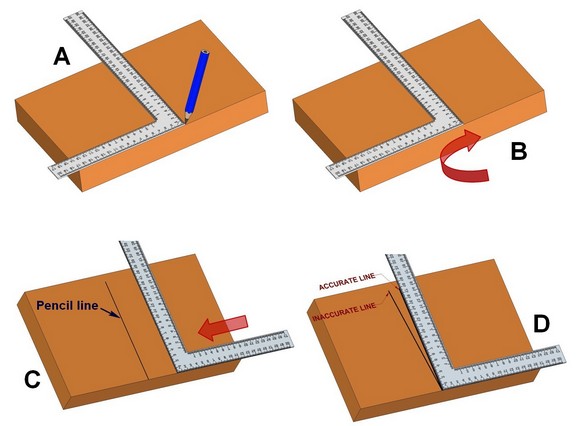The steel square is often called the carpenter’s square or framing square. The steel square is used in measuring boards, testing corners, and seting the bevel of boards and tools to various angles.
It is made of steel, having two flat blades at right angles to each other an having measuring scales on every edge. The long side of the steel square is known as the blade (or body) and the short side as the tongue. The chief value of this tool to the bench worker lies in the fact that it is much better than a try square for use on large work. The edges also are often used as straight edges in laying out work.
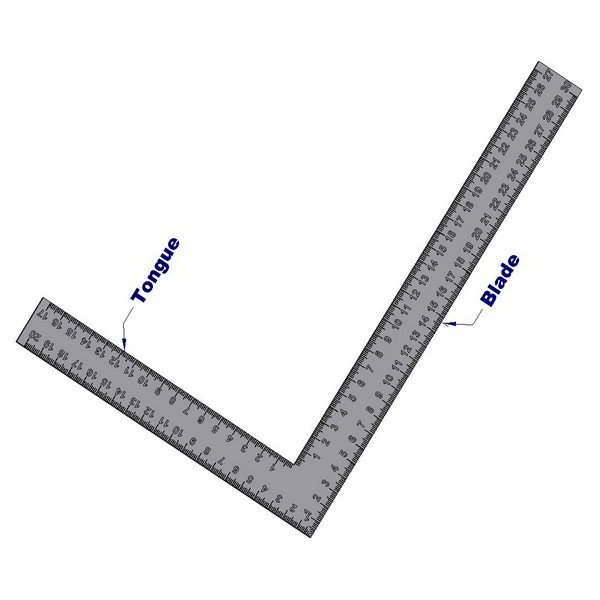
A steel (framing) square can be used for laying out angles by foloving the illustration and table below. The pivot point for measuring these angles is the 100mm mark on the tongue of the square.
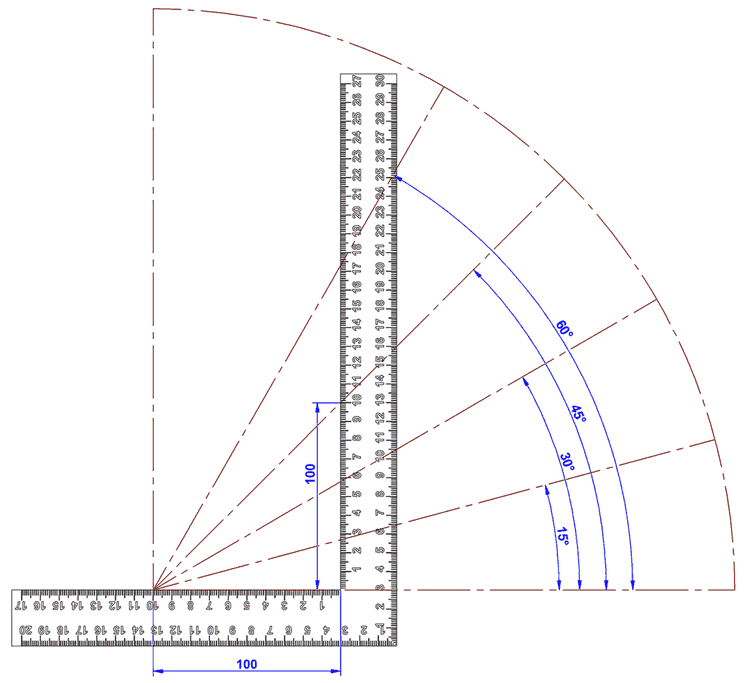
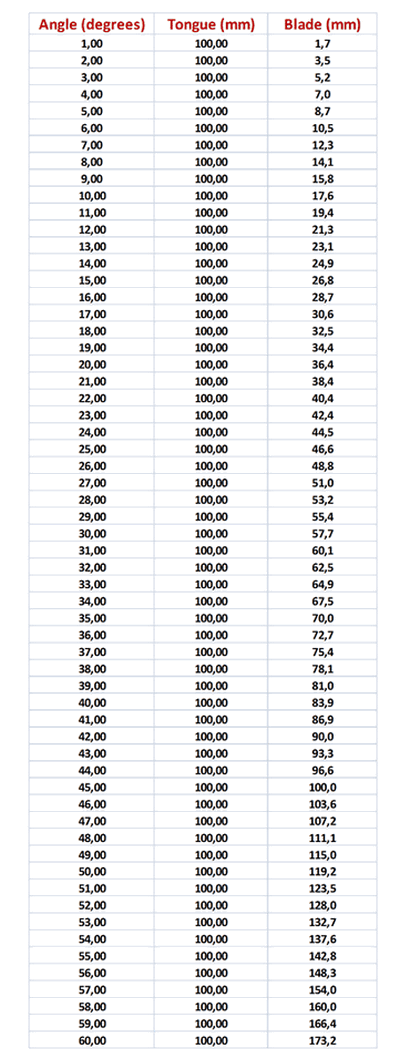
To make a square (90o) mark, place the tongue along or against one edge of the stock. Mark along outside edge of the blade on the face of the stock.
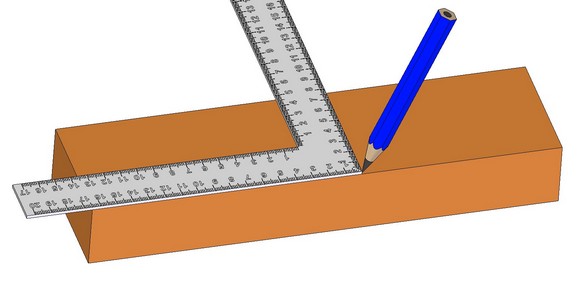
To lay out a 45o angle, place the steel square on the face of the stock so that an equal number of graduations on the blade and on the tongue fall on the stock.
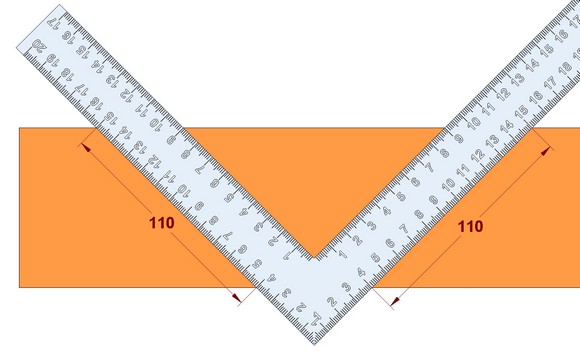
To set an angle of 45 degrees by measurement, use the steel square and sliding T bevel. Equal distances on the blade and tongue will give an angle of 45 degrees.
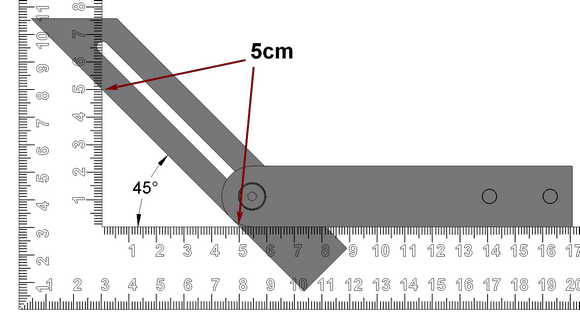
If a steel (framing ) square is suspected of not being accurate, it may be tested easily. Use a board that has a perfectly straight edge
- Place the tongue (or blade) of the steel square against a perfectly straight edge of a board which is wide enough to allow a pencil line to be made the entire length of the blade. Draw a line across the face along the blade of the steel square. (picture A)
- Turn the steel square over (picture B)
- Holding the tongue against the same straight edge, move the blade to the previously marked line (picture C)
- If the steel square is accurate, the pencil line and the edge of the blade will perfectly coincide. (picture D)
